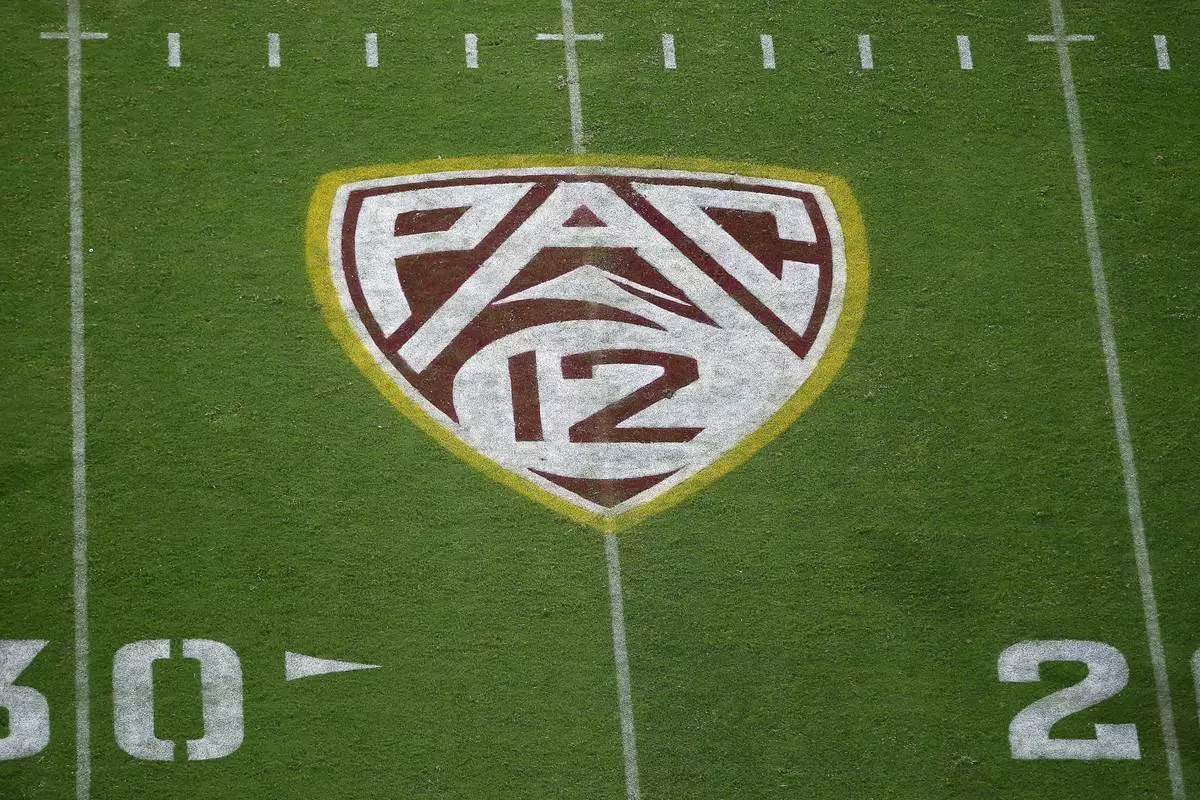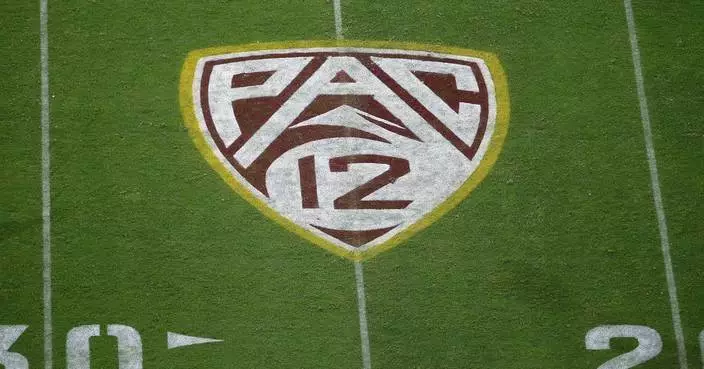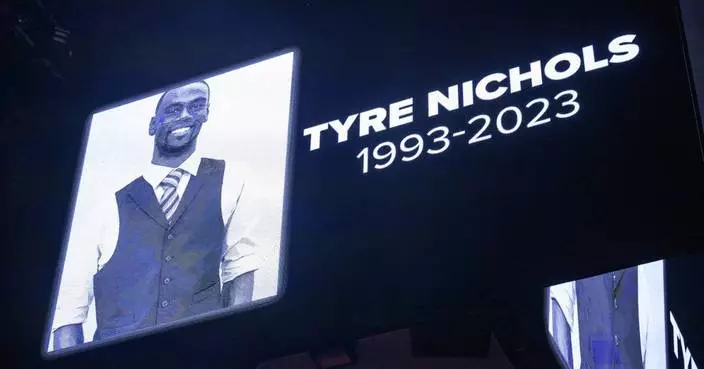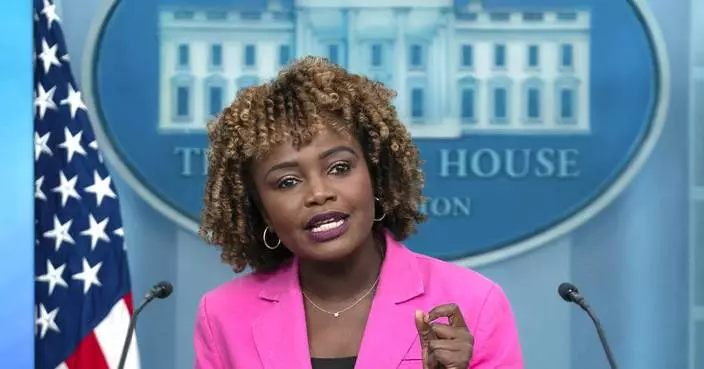A bipartisan group of senators is demanding immediate action from USDA Secretary Thomas Vilsack after several tribal nations reported that a federal food distribution program they rely on has not fulfilled orders for months, and in some cases has delivered expired food.
Last spring, the USDA consolidated from two contractors to one for deliveries of its Food Distribution Program in Indian Reservations. In a letter sent to Vilsack on Friday, the senators expressed concern that Native American families across the country are experiencing “extreme disruptions.”
“Participating households have not had consistent food deliveries for over four months,” the senators wrote. “This is unacceptable.”
The Associated Press obtained a copy of the letter exclusively Thursday, before it was sent the USDA leader.
Democratic Sen. Jeff Merkley of Oregon said he was stunned to hear from five tribal nations in his state this summer that they have been struggling to meet their families' needs since the consolidation.
“The USDA must swiftly and fully address this self-inflicted crisis,” Merkley said in a statement. “There can be no more excuses for food delays, missed deliveries, or delivery of expired products.”
Merkley is joined in the letter by Republican senators John Hoeven and Kevin Cramer of North Dakota and Markwayne Mullin of Oklahoma, as well as Democrats Martin Heinrich of New Mexico, Ron Wyden of Oregon, and Tina Smith of Minnesota.
More than 50,000 Native American families rely on this food, said Mary Greene-Trottier, who directs food distribution for the Spirit Lake Nation and is president of the National Association of Food Distribution Programs on Indian Reservations.
“They’re going without,” Greene-Trottier said. “Imagine showing up at the grocery store during Covid or a winter blizzard, and the shelves are empty. That’s the feeling that they get.”
Officials with Spirit Lake Nation, a tribe in North Dakota with about 7,600 members, said one order this month arrived only partially filled, and another the month before never came.
“We didn’t know our trucks weren’t coming until they didn’t show up,” Greene-Trottier said.
In a July letter to Secretary Vilsack, she and other tribal officials expressed skepticism that the remaining contractor, Paris Brothers Inc., would have enough time to transition into being the sole provider for food deliveries to dozens of tribal nations. The Kansas City, Missouri-based food wholesaler was given only four weeks to prepare for the increased workload, according to the letter.
In a statement, Paris Brothers Inc. said it is “actively addressing” the recent challenges.
The USDA has responded with updates in weekly calls with tribal leaders, and a consultation with tribes is scheduled for next month in Washington, D.C.
The agency said the decision to consolidate was the outcome of a competitive bidding process, and Paris Brothers was the only company that the USDA board determined could meet the need. To help the contractor scale up to handle a larger influx of inventory, the agency has provided USDA staff to assist with customer service-related work with tribes and is partnering with the Federal Emergency Management Agency to help with the company’s logistics program.
“Our first order of business has been to get food where it’s needed,” the agency said in a statement. “In addition, we are undertaking a review of our procurement process to prevent similar circumstances from occurring in the future.”
The agency also is assisting tribes in using other federal programs that can offer additional food and resources, and has offered $11 million to tribal nations to address the food shortages while Paris Brothers tries to catch up.
But Greene-Trottier said that money likely won’t go far enough, and tribal leaders have been told they won’t be eligible for reimbursement of any additional costs. She's been relying on other programs and scarce resources to fill the gaps. The Spirit Lake Nation and others have even offered to drive to Missouri to pick up their food orders themselves, but Greene-Trottier said that request was denied by the USDA.
On Thursday, Spirit Lake Nation officials said they were told missing orders from July will be canceled and left unfulfilled. Vice Chair ReNa Lohnes said the tribe has yet to receive its portion of the $11 million, leaving them hard pressed for solutions and not knowing how, if ever, they will be made whole again.
Lohnes said she had concerns from the beginning, when USDA announced the change, but she never imagined they would be where they are now. “Thinking that we would be scrambling for food,” she said. “We’ve been told that it’s coming, it’s coming, it’s coming. And we wait and wait and nothing.”
—-
This story has been corrected to Vilsack, not Vilsak.

FILE - Agriculture Secretary Tom Vilsack testifies during a Senate Agriculture, Nutrition, and Forestry oversight hearing on the Department of Agriculture on Capitol Hill Wednesday, Feb. 28, 2024, in Washington. (AP Photo/Mariam Zuhaib, File)
Can't say the Pac-12 is making a comeback because it never really went away.
The Conference of Champions was certainly in critical condition, but Oregon State and Washington State stood fast after the league collapsed in 2023 and vowed to keep it alive if a power conference invite didn't come.
Now, the Beavers and Cougars will be joined by Boise State, Colorado State, Fresno State and San Diego State in a reimagined Pac-12 in 2026.
The latest realignment aftershock makes it four straight years where the 10 major Division I football conferences have been shaken up.
Of course, more moves will now follow. The Pac-12 is still two schools short of what it needs to be a recognized conference by the NCAA in two years and the Mountain West is facing a future without four of its most valuable members, so shopping for replacements could be the next step.
Football is the easiest answer. Boise State, Fresno State and San Diego State have not only been three of the best programs in the Mountain West (nine conference championships combined since 2013) but three of the most consistent winners in the country outside those in power conferences.
Colorado State is the outlier. The Rams have had runs of success, but despite a relatively new stadium and other investments in football it has been a struggle lately. Colorado State has not had a winning season since 2017, but the school does have a foothold in the Denver media market and fields good basketball teams.
San Diego State has been a men's basketball powerhouse, with a Final Four appearance in 2023, and Boise State has made three straight NCAA men's tournaments.
This is not the promotion these schools had been hoping for. They have all angled for years to join a power conference, where schools get payouts upward of $30 million annually from multibillion-dollar TV deals.
Still, this is a step up. Between the Pac-12's strong brand value and aligning with a smaller group of schools that have traditionally fielded highly competitive sports programs, the hope is it will boost revenue and profile.
"The acceptance of this invitation to join and rebuild Pac-12 membership is a catalyst for our vision of being the most watched, most loved and most innovative program in the West," Colorado State athletic director John Weber said.
A Pac-12 that starts with these six teams could also be better positioned than the Mountain West to earn one of five spots guaranteed to conferences champions in the new 12-team College Football Playoff.
Oregon State and Washington State got most of the Pac-12's money and assets in the divorce with the 10 former members. School leaders have pushed back on referring to what they have access to as a war chest, but they have about $250 million at their disposal.
They will have to dip into that to extricate Boise State, Colorado State, Fresno State and San Diego State from the Mountain West, probably to the tune of about $110 million.
Will they spend more on Mountain West schools or look elsewhere?
In the Mountain West, Air Force and UNLV could be next in line. Schools in the American Athletic Conference such as UTSA, Memphis and Tulane could be attractive and cheaper.
AAC bylaws require departing members pay a $10 million withdrawal fee and give 27 months' notice. That timeline doesn't work for a July 2026 entry to the Pac-12, so figure any school leaving the AAC would have to increase the exit fee by a few million.
The AAC currently has the best media rights deal among Group of Five conferences, helping the conference pay out about $9 million per school per year.
None of the schools that left the Pac-12 are coming back. Even with the uncertainty in the Atlantic Coast Conference, Stanford and California are locked in long term via a grant of media rights contract — unless the ACC is next to collapse.
The Pac-12 managed to land a deal with the CW and Fox to broadcast football games this year, but the conference has nothing beyond it. The hope is a streamlined, best-of-the-rest conference can garner a better or equal deal to the $1 billion, 12-year contract the AAC has with ESPN. With fewer schools to feed, the payouts could be better per school.
Barring more defections, the conference will still include UNLV, Air Force, Utah State, New Mexico, San Jose State, Nevada, Wyoming and Hawaii for football-only. Hawaii is otherwise affiliated with the Big West.
That's enough to move forward, but with its television deals expiring after the 2025-26 seasons, it is questionable whether the conference could replicate the $270 million, six-year deal with Fox and CBS it currently has.
Adding schools might not help, but if the MWC was looking, its best options might come in the second tier of Division I. The Big Sky with Montana, Montana State, Eastern Washington, Idaho and others is arguably the best conference in the Football Championship Subdivision. Those school have resisted jumping up to the Bowl Subdivision before.
Follow Ralph D. Russo at https://twitter.com/ralphDrussoAP
Get poll alerts and updates on the AP Top 25 throughout the season. Sign up here. AP college football: https://apnews.com/hub/ap-top-25-college-football-poll and https://apnews.com/hub/college-football

Why join the Pac-12? What schools could be targeted next? What's next for Mountain West?

FILE - The Pac-12 logo at Sun Devil Stadium during the second half of an NCAA college football game between Arizona State and Kent State in Tempe, Ariz., Aug. 29, 2019. (AP Photo/Ralph Freso, File)

Why join the Pac-12? What schools could be targeted next? What's next for Mountain West?













